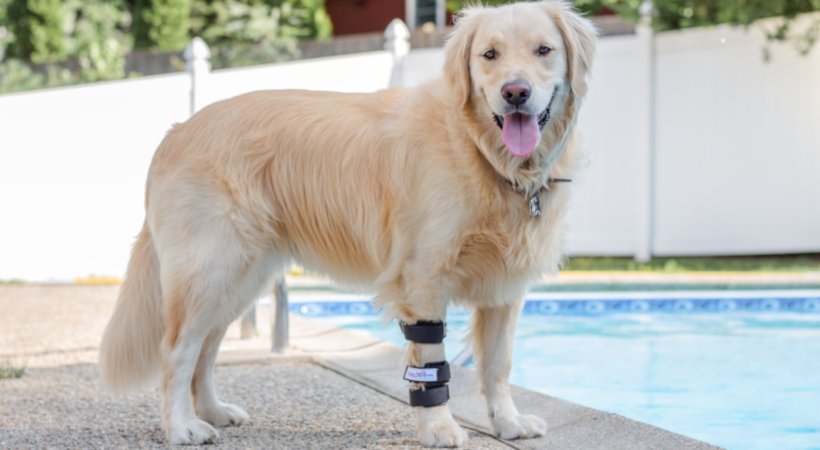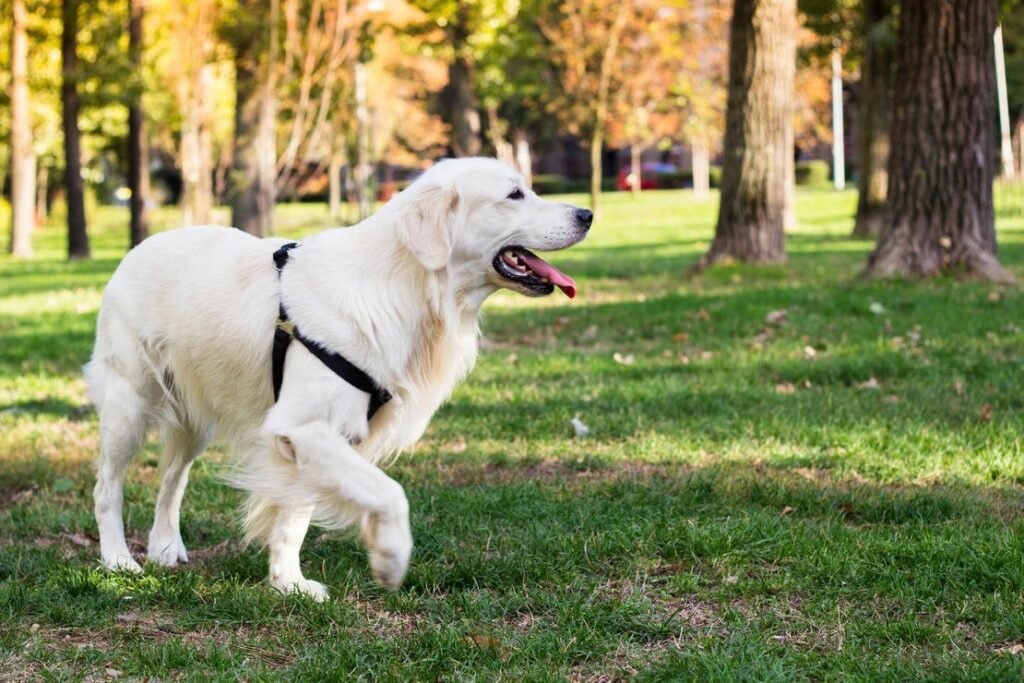How To Treat A Limping Dog At Home: Effective Home Treatment

As a pet owner, all you want is for your furry friends to be happy and healthy. However, when your dog starts to limp, it can be distressing to watch your limping dog.
While veterinary care is essential for serious injuries, several home remedies can help ease your dog’s discomfort and promote healing.
Thousands of years before modern medicine, humans relied on plants, herbs, and natural remedies to heal their ailments.
It’s no surprise that even today, many of us still turn to nature to find solutions for health and wellness concerns. The same is true for our beloved dogs.
But how can you safely and effectively use Doggie Herbs products to treat your limping dog at home? That is what this article is all about. Continue reading to the end to find out.
What Causes A Dog To Limp?
Dogs may limp for various reasons, with injury and illness being two of the most frequent causes. Injuries can be minor or severe and may occur due to a traumatic event, such as a fall or collision.
Sprains, fractures, and strains are common injuries that can result in limping. Remember that dogs that engage in high-impact activities or sports are more prone to such injuries.
Illnesses can also cause limping in dogs. Arthritis is a common condition that can result in chronic limping. Infections, like Lyme disease or bone infections, can also lead to limping.
You should, however, note that limping can sometimes be a sign of a more severe condition, such as cancer or a neurological disorder.
This is why it’s crucial to identify the underlying cause of limping in your dog to provide the right treatment.
Gradual Limping Vs. Sudden Limping
One important aspect of limping is whether it is gradual or sudden in onset. Each limping type can indicate different underlying issues and may require different approaches and treatments.

Gradual limping occurs slowly until it worsens and is often associated with chronic conditions like arthritis or hip dysplasia.
On the other hand, sudden limping appears quickly and without warning and may be caused by acute injuries like sprains, strains, or fractures.
How To Treat Your Limping Dog At Home
Confine your limping dog
Limiting their physical activity to avoid further damage or pain is best. It’s recommended to avoid strenuous activities such as running and jumping, which can worsen their injuries. Moreover, keeping your dog calm and relaxed is vital during their state.
Determine the cause
As we’ve already discussed above, it’s important to determine the root cause of your dog limping. This will help you choose the right approach to treatment.
Observe your dog’s behavior and check for visible signs of discomfort or injury. Keep track of any recent accidents or changes in your dog’s posture.
Immediate medical attention is necessary for some causes of limping, such as fractures or joint dislocations. In such cases, take your dog to the vet as soon as possible to prevent further damage and provide timely treatment.
Wash the wound
Keeping the affected area clean is important to prevent infection and promote healing if your dog is limping because of a wound.
You can do this by washing the wound regularly with warm water and mild soap. Use a clean towel or gauze to remove dirt or debris around the wound gently. Be gentle and avoid scrubbing the area, which can cause further pain and irritation.
Once the wound is clean, you can apply (the herbal salve) followed by a sterile bandage or dressing to protect it from further injury or contamination.
In some cases where the wound is deep or bleeding heavily, seek veterinary attention immediately.
Perform heat or cold therapy
You may apply heat or cold therapy to the affected area to alleviate pain and inflammation. For heat therapy, use a warm compress or a heating pad for 10-15 minutes, repeated several times daily.
Heat therapy can help increase blood flow and relax the affected area, reducing inflammation and promoting healing.
Alternatively, you may use a cold compress or an ice pack for 10-15 minutes, repeated several times daily.
Cold therapy works by narrowing the blood vessels and reducing blood circulation to the affected region. This process reduces inflammation and promotes healing.
Massage the affected area
Gentle massage can be a beneficial at-home remedy for a limping dog. It aids in increasing blood flow and healing in the affected area.
Use gentle pressure and circular movements when massaging while avoiding sensitive or painful areas. Massage can also alleviate muscle tension and stiffness, which can contribute to limping.
Consider natural remedies
If you’re looking for natural ways to help your dog recover from a limp, several remedies may be helpful.
Most of these herbs come in powder form, which you can easily scoop and mix with the appropriate amount of water.
The following are examples of herbs you can use on a limping dog; Doggie Ruff Tendons for healing tendons and Doggie Itch & Scratch for itch relief for dogs.
After you have done all the above procedures, you can give your dog the natural remedy and allow some time to rest.
Monitor Your dog’s progress
It is important to monitor your dog’s limping and take notice of any alterations in their behavior or appetite.
If there is no improvement in your dog’s limp after a few days or if their condition worsens, it is necessary to seek advice from a veterinarian.
However, if there are signs of improvement, it is advisable to continue with the treatment until your dog is completely healed and able to walk normally.
Conclusion
By now, you know how to treat a limping dog at home. And as you’ve seen, caring for a limping dog at home requires much attention and care.
Following the abovementioned steps can ease your dog’s pain and promote healing while providing the necessary comfort and care.
It’s important to remember that limping can have different causes, and some cases may require veterinary attention. By working hand in hand with your vet and providing consistent care at home, you can help your dog recover and return to their usual activities.



